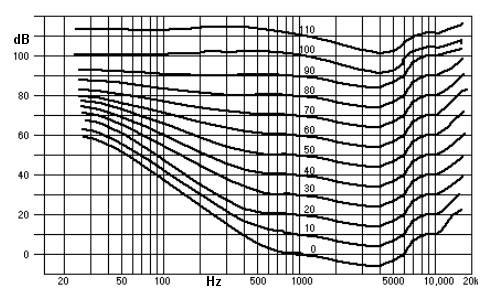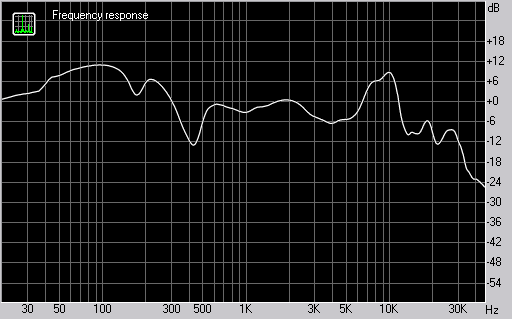If you are an audio engineer, or aspiring audio engineer, you’ve probably heard that it’s best to mix at low volumes. This is because according to the Fletcher-Munson curve, our sensitivity to volume changes at different frequencies. Generally speaking we can hear speech frequencies (2-5khz) over low or very high frequencies at the same dB, and the louder the mix gets, the less of a subjective difference there is between these ranges.
Figure A: Here is the Fletchur-Munson curve. If you look at 50 DB , for example, the volume needs to be much higher than 50db in the lower and high frequencies in order to match the perceived same volume at around 1khz.
When mixing at a low volume, you are eliminating the “allusion” that the frequency spectrum is balanced which is what we perceive when the volume is loud (notice the compression or flattening out when you get to high dB’s on Figure A). For example you may think that the kick drum sounds tight and punchy next to the bass when the volume is loud, but when you turn the volume down you realize that kick hasn’ been processed enough and becomes lost in the mix. So making judgments about arrangement, EQ, and compression are much better to make at low volumes. So if mixing at low volumes seems to reveal more accurate results, why is this article called mixing and low and high volumes! Well there is one thing that is difficult to hear at low volumes: sibilance. If you aren’t familiar with sibilance , basically sibilance is the result of exaggerated “s” or “ch” or “sh” sounds from a vocalist, which causes the frequency response to peak anywhere from 4-10Khz (sometimes higher). A highly sibilant vocal may look something like this on an Frequency analyzer :
Figure B : A noticeable sibilant spike around 8-10Khz.
Hearing these sounds throughout a song sounds very harsh and fatiguing to the ears after time, so at all times must be controlled or tamed in some way. However at a low volume, not many things sound fatiguing or harsh to our ears. You can listen to a 5 Khz tone for hours at a low volume, but on a loud system will drive you nuts after seconds. So when listening for harshness, turn up those speakers, and start de-essing, and eqing away!
Dan Zorn, Engineer
Studio 11 Chicago
209 West Lake Street
312 372 4460
Studio11chicago@gmail.com



Comments.
Currently there are no comments related to this article. You have a special honor to be the first commenter. Thanks!